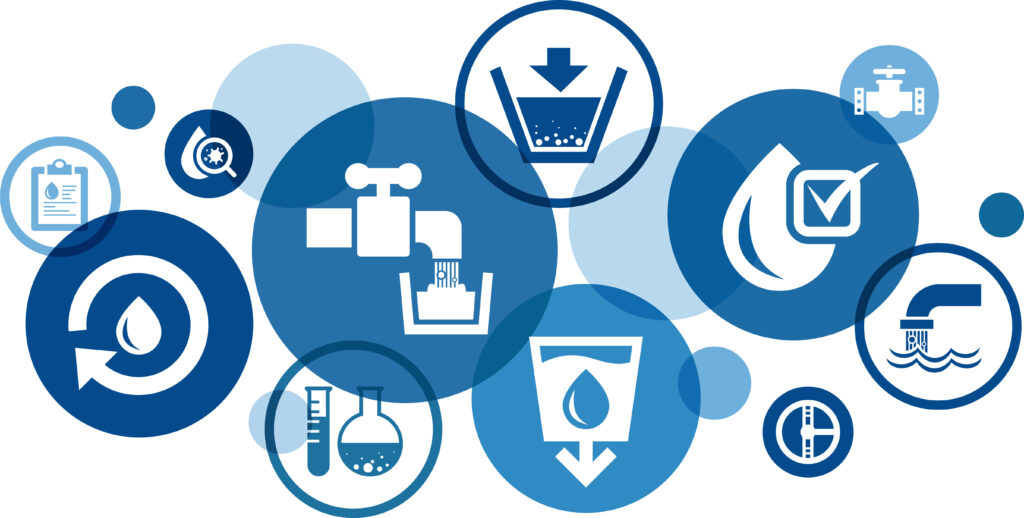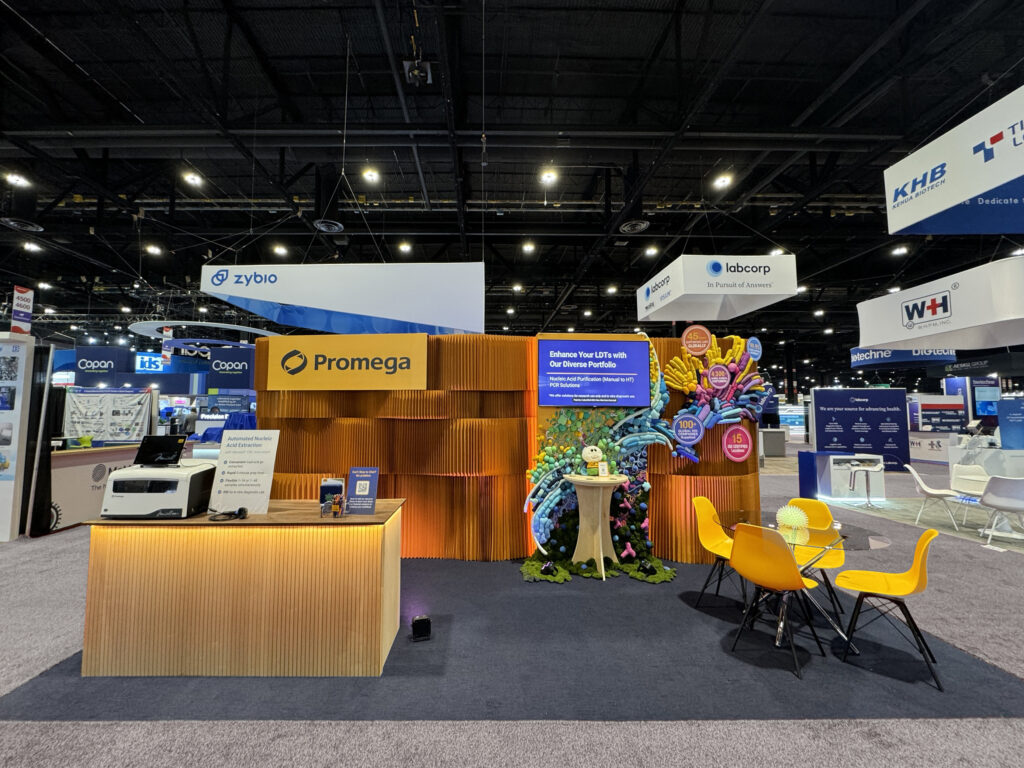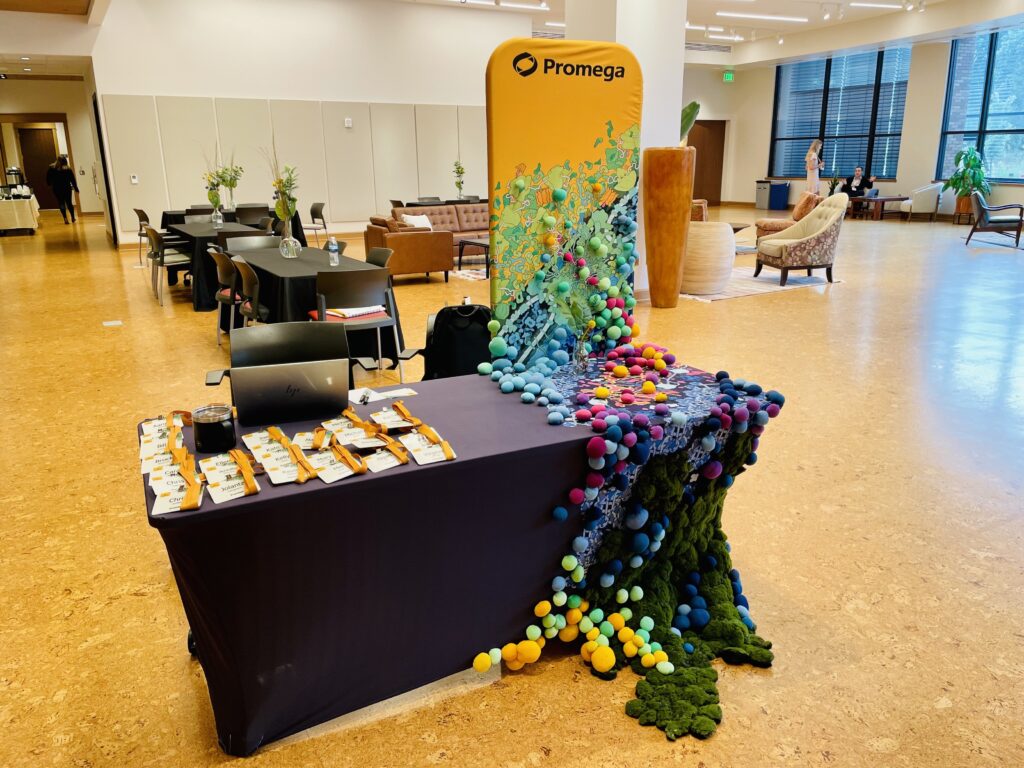Step inside a Promega booth and leave the ordinary behind. Here, science sparks creativity, sustainability is woven into every detail, and discovery isn’t just something you see—it’s something you feel.
Continue reading “Bringing Science to Life: How Art and Sustainability Shape Our New Trade Show Booth Design”An Unexpected Role for RNA Methylation in Mitosis Leads to New Understanding of Neurodevelopmental Disorders
Traditionally, RNA methylation has been studied in the context of gene expression regulation, RNA stability and translation efficiency, with its primary role thought to be in modulating cellular homeostasis and protein synthesis. However, a 2025 study by Dharmadkikari and colleagues uncovers an unexpected and critical function for RNA methylation in mitotic spindle integrity.
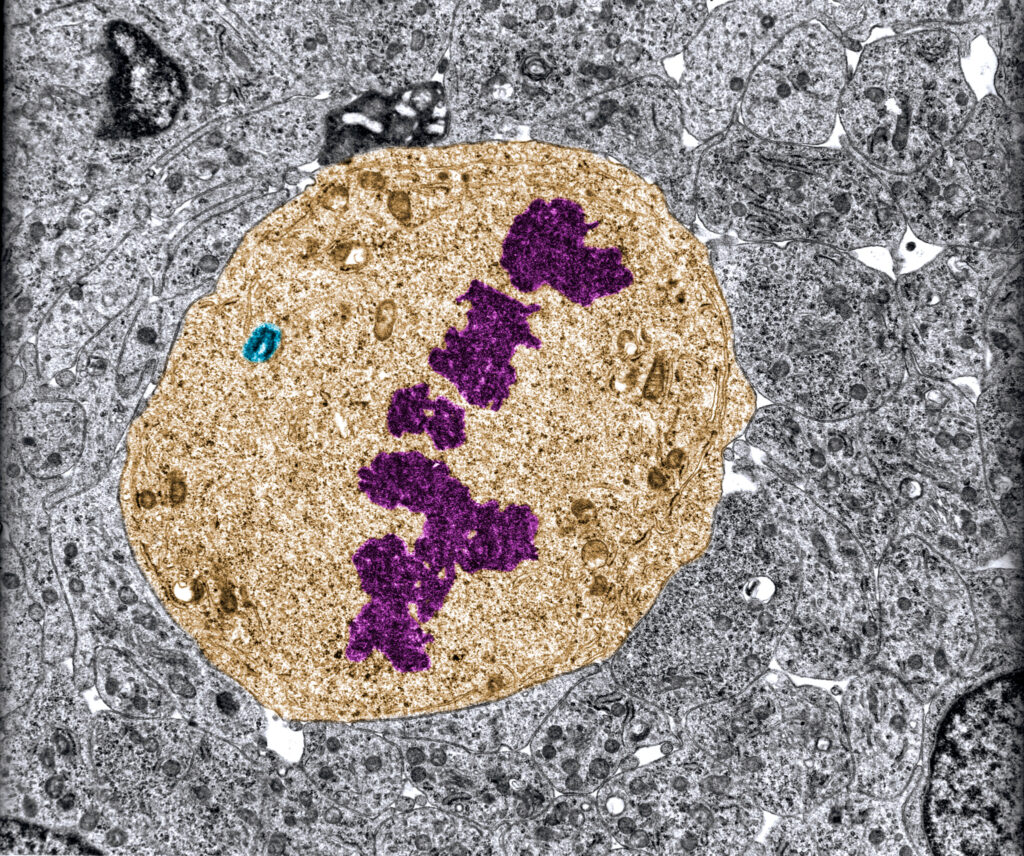
The study identifies a critical role for SPOUT1/CENP-32-dependent methylation in mitotic spindle formation and accurate chromosome segregation. Originally identified in a large-scale analysis of proteins associated with mitotic chromosomes, SPOUT1/CENP-32 encodes a putative RNA methyltransferase. The protein localizes to mitotic spindles, and when it is absent centrosome detachment from the spindle poles, delayed anaphase, and chromosome segregation errors are observed. Further, CRISPR experiments in human cells show that the protein is essential for cell viability.
Continue reading “An Unexpected Role for RNA Methylation in Mitosis Leads to New Understanding of Neurodevelopmental Disorders”Microfluidic Organoids Could Revolutionize Breast Cancer Treatment
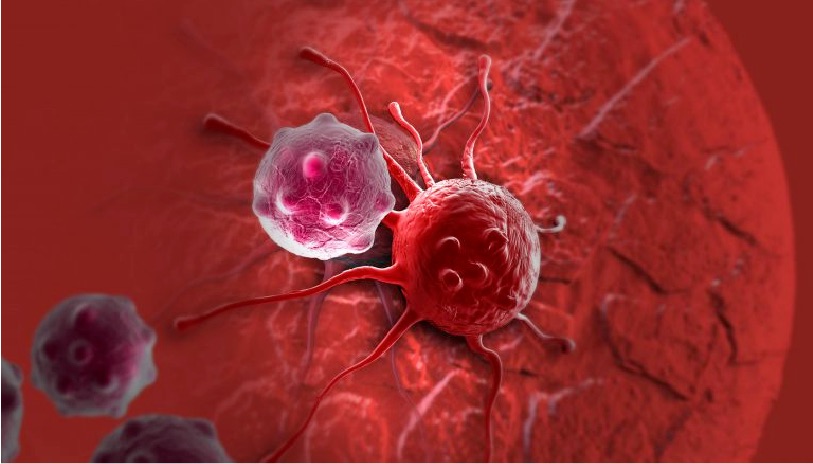
Breast cancer is the most common tumor among women worldwide and has a profound impact on individuals and society. Aside from being a leading cause of cancer-related death, patients often undergo invasive treatments such as surgery, radiation, and chemotherapy, which may result in long-term side effects and reduced quality of life. Additionally, the healthcare burden of breast cancer is immense. This makes effective, timely, and personalized treatments a critical need.
A recent study published in Scientific Reports presents a microfluidic-based method for growing breast cancer organoids that significantly reduces the culture time while maintaining essential structural and drug response characteristics. This method could be the key to developing personalized breast cancer treatments in the future.
Continue reading “Microfluidic Organoids Could Revolutionize Breast Cancer Treatment”Can Fungi Help Clean Up Environmental Contaminants?

Polycyclic aromatic hydrocarbons (PAHs) are widespread environmental pollutants found in industrial waste, fossil fuel combustion and creosote-treated wood, to name a few. Due to these industrial activities, there are multiple pathways for human exposure. These compounds pose significant health risks due to their carcinogenic, teratogenic and mutagenic properties yet removing them from contaminated sites remains a challenge. Traditional remediation techniques, such as dredging and chemical treatment, are costly and can further disrupt ecosystems (1).
Mycoremediation—using fungi to break down pollutants into intermediates with lower environmental burden—offers a sustainable, low-cost alternative for PAH degradation. While past research focused on basidiomycete fungi like white rot fungi, these have been unreliable in large-scale field applications. This study investigates an alternative approach: leveraging naturally occurring ascomycete fungi from creosote-contaminated sediments to enhance PAH degradation (1).
Continue reading “Can Fungi Help Clean Up Environmental Contaminants? “No More Dead Ends: Improving Legionella Testing with Viability qPCR

Legionella is the causative agent of Legionnaires’ disease, a severe form of pneumonia with a mortality rate of around 10%. Contaminated water systems, including cooling towers and hot water systems, serve as primary reservoirs for this opportunistic pathogen. Traditional plate culture methods remain the regulatory standard for monitoring Legionella, but these methods are slow—often requiring 7–10 days for results—and suffer from overgrowth by non-Legionella bacteria. Additionally, traditional methods fail to detect viable but non-culturable (VBNC) bacteria—cells that remain infectious but do not grow on standard culture media.
Molecular methods like PCR-based detection provide faster and more sensitive Legionella identification. However, a key limitation persists: PCR detects DNA from both live and dead bacteria, leading to false positives and unnecessary or even wasteful remediation efforts. To address this challenge, Promega has developed a viability qPCR method that retains the speed of molecular testing while distinguishing viable bacteria from non-viable remnants. In this third blog in our Legionella blog series, we cover how molecular detection methods can be refined to provide actionable results for Legionella monitoring.
Continue reading “No More Dead Ends: Improving Legionella Testing with Viability qPCR”Overcoming qPCR Inhibitors: Strategies for Reliable Quantification
Today’s blog is written by guest blogger, Gabriela Saldanha, Senior Product Marketing Manager at Promega.
Quantitative PCR (qPCR) is an indispensable tool for nucleic acid analysis, widely used in research, clinical diagnostics and applied sciences. Its sensitivity and specificity make it a powerful method for detecting and quantifying DNA and RNA targets. However, qPCR reactions are highly susceptible to inhibitors—substances that interfere with enzyme activity, primer binding, or fluorescent signal detection. These inhibitors can originate from biological samples, environmental contaminants, or laboratory reagents, potentially leading to inaccurate quantification, poor amplification efficiency, or complete reaction failure.
IC50, EC50 and Kd: What is the Difference and Why Do They matter?

Three of the most common metrics in drug discover are Kd, IC50 and EC50. At first glance it can seem that they measure the same thing, but they don’t. Kd measures how tightly a molecule or compound binds to its target. IC50 measures inhibition of a function and conversely, EC50 measures activation or induction of a response. Confusing these values can lead to misinterpretation of assay results and costly rework. Let’s take a closer look at each one.
Continue reading “IC50, EC50 and Kd: What is the Difference and Why Do They matter?”Tackling Undrugged Proteins with the Promega Academic Access Program
For some scientists, words like “undrugged protein” are almost a personal challenge. That simple phrase sparks a fire that fuels an intense drive to characterize the protein, solve its structure and develop a molecule that will bind it and produce a beneficial phenotype.
That’s how Dr. Val Watts feels about adenylyl cyclases. These GPCR-activated enzymes are promising targets for efforts related to chronic pain and many other health conditions. While more than 50% of approved drugs in the United States target GPCRs, there are currently no therapeutics targeting the downstream adenylyl cyclases.
“The fact that they are undrugged today…I take this challenge so seriously that I have a tattoo of adenylyl cyclase on my arm,” Val says. “I want to drug them before my time in academia is over.”
Val Watts is the Associate Dean for Research and a Professor of Medicinal Chemistry and Molecular Pharmacology at Purdue University. The Promega Academic Access Program has helped him bring technologies like NanoBRET® protein interaction assays into his lab at reduced costs. Technologies acquired through the program help Val’s team generate unique insights into adenylyl cyclase behavior in live cells, monitor critical molecules and much more. Their participation in the Academic Access Program and their growing relationships with Promega scientists have helped the lab navigate financial constraints while still pushing their research forward.
Continue reading “Tackling Undrugged Proteins with the Promega Academic Access Program”Alzheimer Disease and Metabolic Dysfunction: A Critical Intersection in Brain Health
This guest blog post is written by Alden Little, a Marketing Intern at Promega.
Alzheimer disease (AD) is one of the most devastating neurodegenerative disorders, affecting millions worldwide. While much attention has been given to amyloid plaques and tau tangles, emerging research suggests that metabolic dysfunction in the brain plays a crucial role in the disease’s progression. A recent study published in Acta Neuropathologica by Schröder et al. sheds new light on how astrocytes—the brain’s metabolic support cells—are affected in AD, and how their dysfunction impacts neurons.

Strengthening Water Safety Measures with Advanced Detection
Detecting Legionella in water systems is a critical step in preventing outbreaks of Legionnaires’ disease. However, not all detection methods are created equal. One of the biggest challenges in water testing is differentiating between viable and non-viable cells. This distinction is essential for making informed decisions about water system safety and compliance, especially in high-stakes environments like hospitals, office buildings and public spaces.
In a previous blog, we explored the history and significance of Legionella testing, from its discovery during the 1976 outbreak to the risks posed by modern water systems. We also highlighted the limitations of traditional culture-based detection and the need for advanced tools to improve accuracy and speed. In this second blog, we will dive deeper into the challenges of Legionella detection, the science behind qPCR technology and how an innovative approach to qPCR addresses these challenges. Finally, we will demonstrate how this technology fits into established workflows to deliver reliable, actionable results for water safety.
